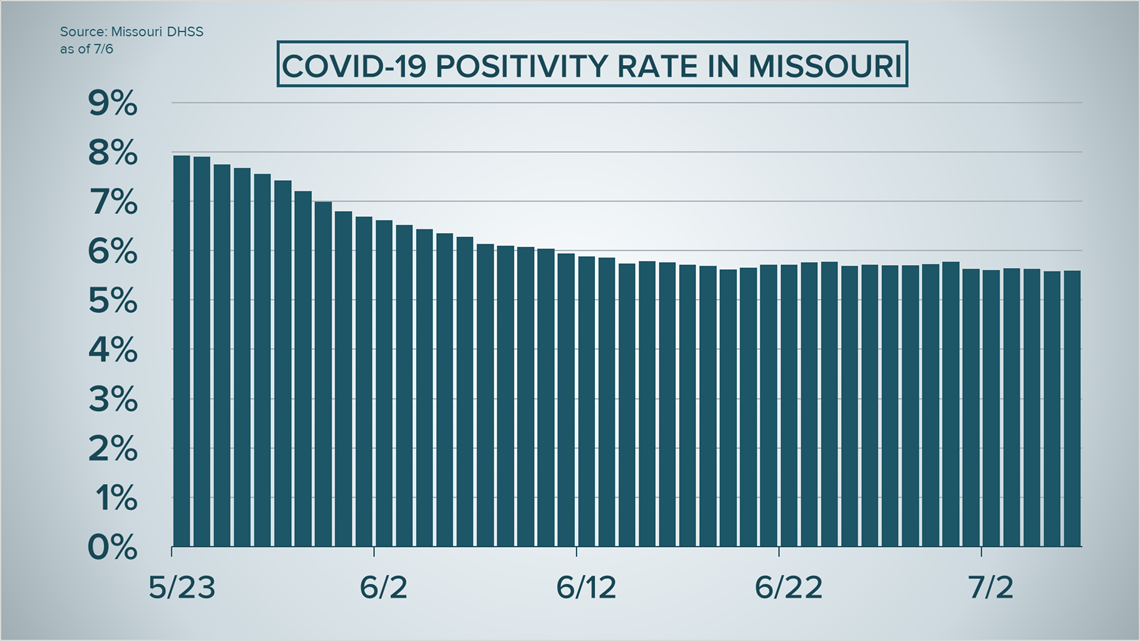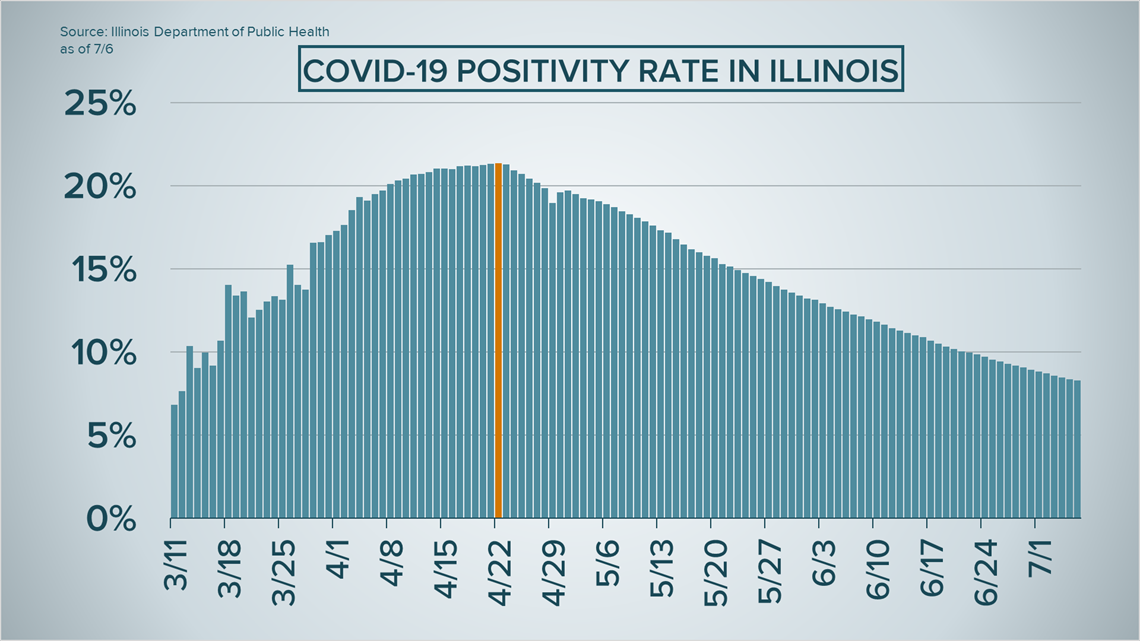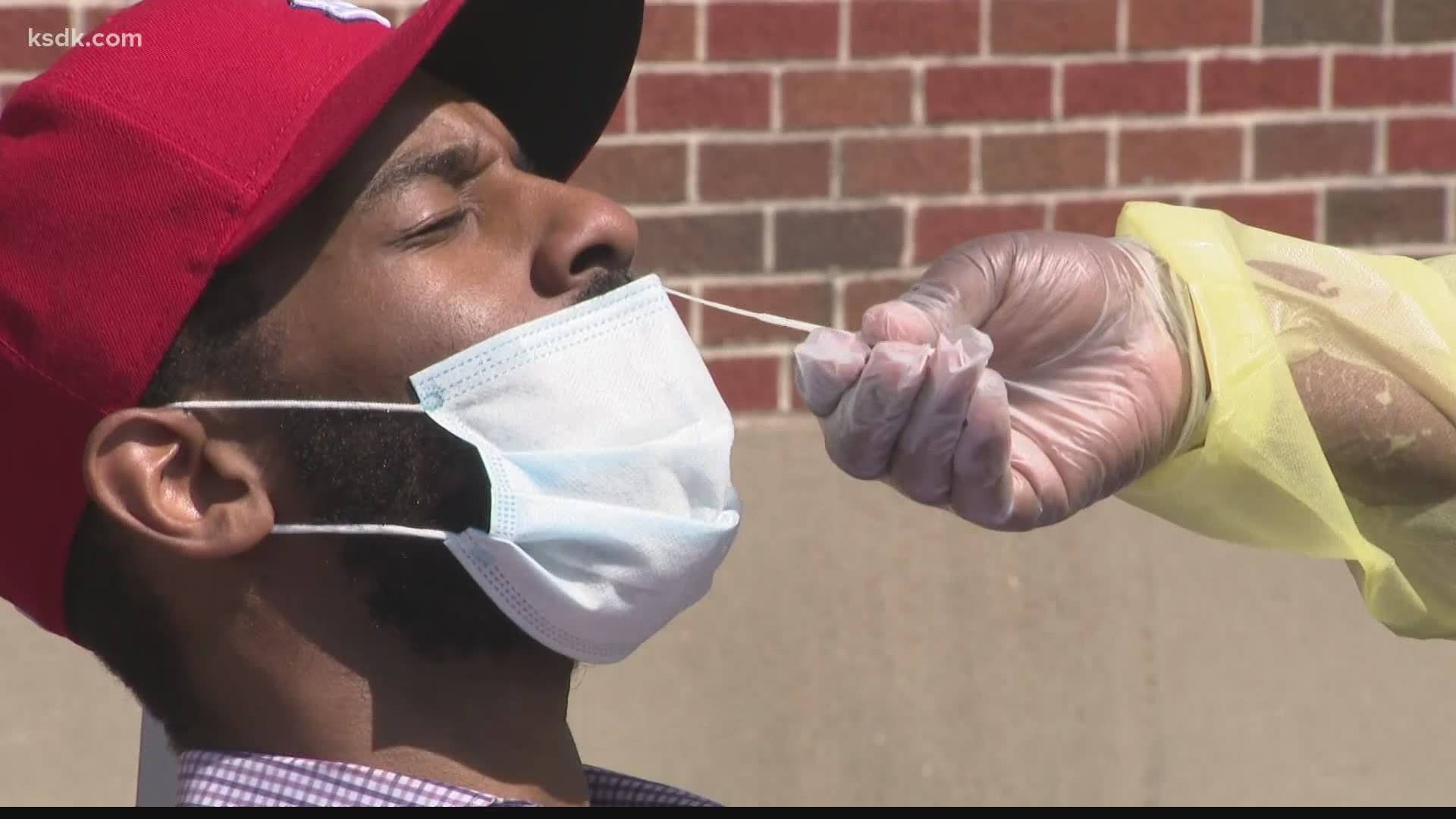ST. LOUIS — The percentage of COVID-19 tests coming back positive is substantially lower statewide for Missouri and Illinois, even as Missouri reported spikes in new daily cases over the past two weeks.
The percent positive rate, or positivity rate, is one of a number of factors that can gauge how the virus is being transmitted in the community. It's helpful because it factors in the amount of testing that's being done when looking at new cases, which is important because more testing means an increased chance of more positive cases.
On Monday, the positivity rate in Missouri was 5.59%, which is where it was the day before.


Meanwhile, the rate for Illinois was 8.29%, which is lower than the previous day's 8.36%.


Dr. Alex Garza, who leads the regional pandemic task force, said a rate below 10% is a good sign.
However, there are two factors that need to be considered: the amount of testing being done and who is being tested.
In mid-April, positivity rates in Illinois were above 20%. Dr. Garza attributes this rate, which he said is "really high" due to the fact that testing was not as widely available at the time. Testing was limited to people showing severe symptoms, so the percentage of people who tested positive was much higher. Now, that testing has expanded in Missouri and Illinois, the percentage of positive tests is much lower.
Dr. Garza said, when it comes to who is being tested, the task force hospitals differentiate between people who are showing symptoms and those who are asymptomatic. This separation is important because testing is so widely available and, now, younger and healthier people are being tested which can skew the impact because that group is less likely to be hospitalized or show severe symptoms.
According to Dr. Garza, the local positivity rate for symptomatic people is actually up, meaning more people are getting sicker.
Dr. Garza said if the virus continues to spread, and people are lax on the measures to prevent it — social distancing, hand washing and wearing face coverings — the rate could trend back in the direction of where it was before it lowered and leveled out.


